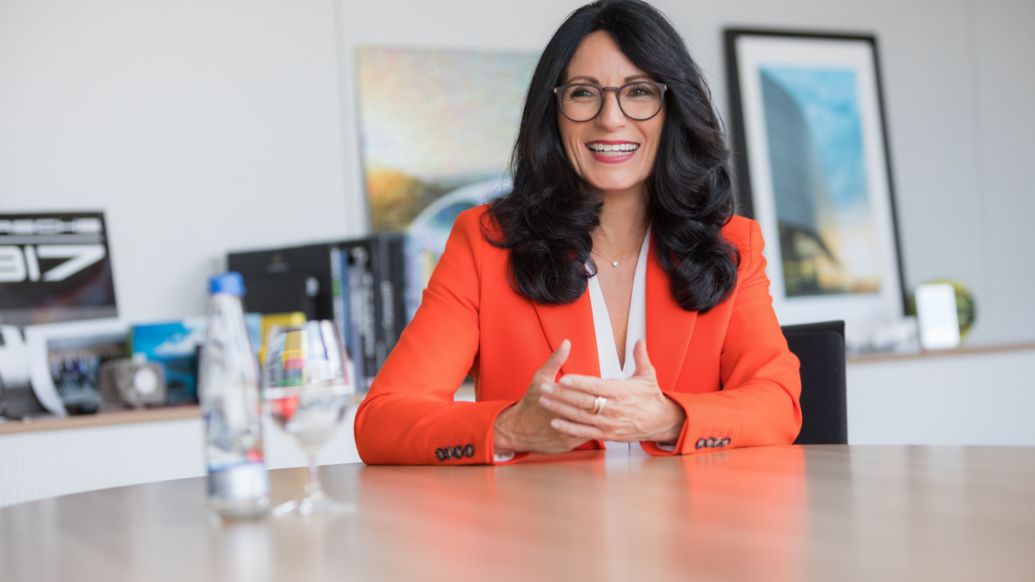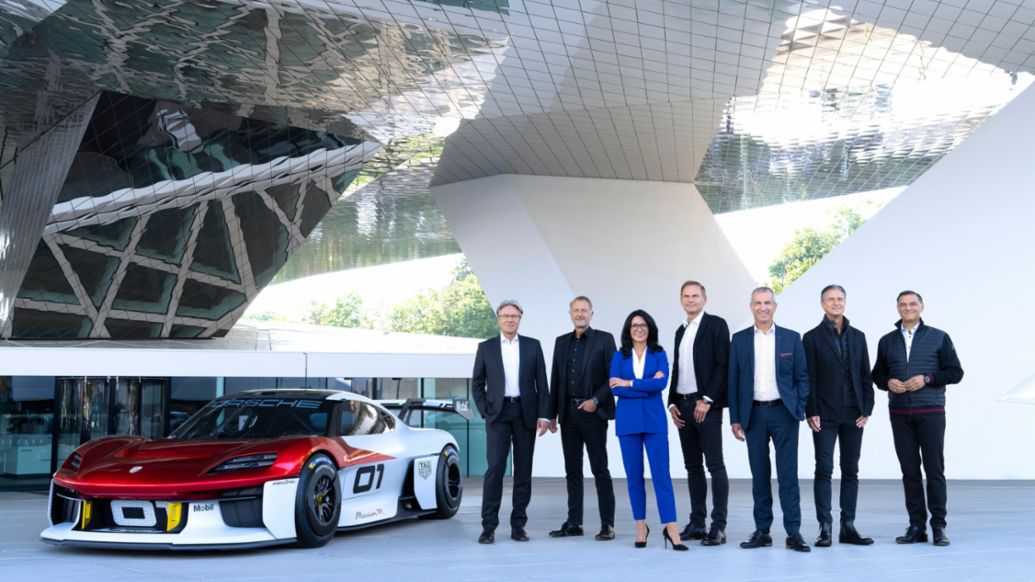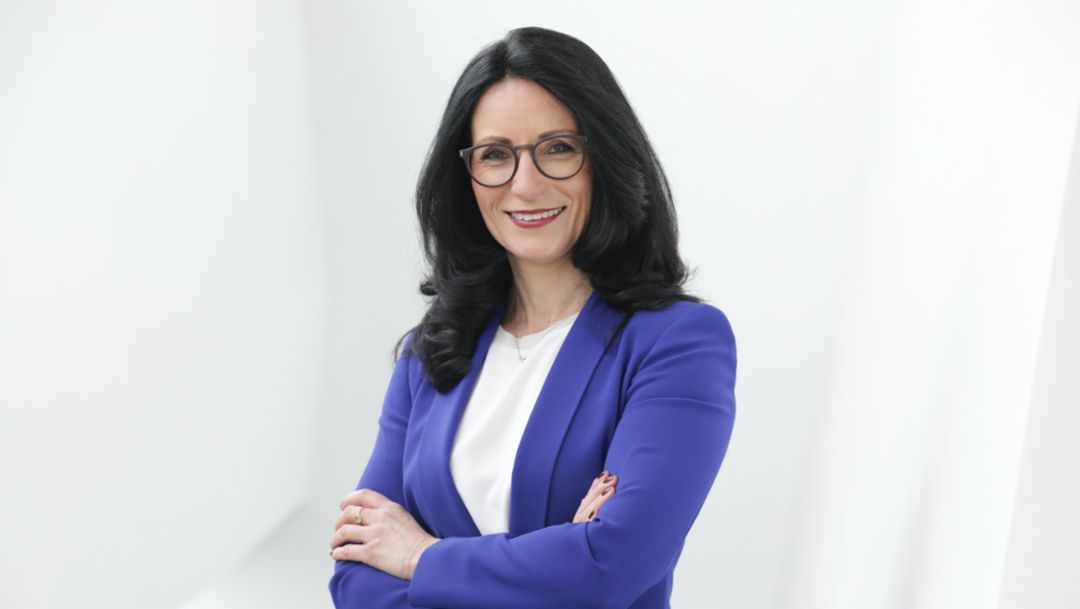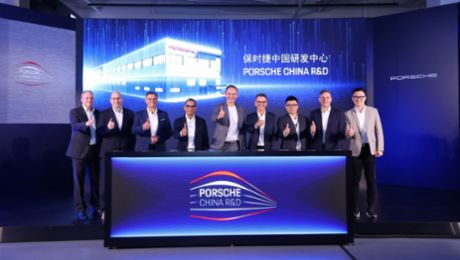Barbara Frenkel has achieved something that no woman before her at the Stuttgart carmaker had accomplished: she became the first woman to join the luxury brand’s seven-member Executive Board, climbing to the highest echelons of the company’s management. After serving as head of European sales, Barbara Frenkel has been in charge of procurement since June. This is particularly important at Porsche because the in-house share of production has always been small. Some 80 percent of the value added comes from external partners. The annual purchasing volume is more than nine billion euros.
Despite its great importance, however, the board members responsible for procurement are seldom in the public spotlight. But since chips have been in very short supply throughout the automotive industry, buyers have had to manage crises and cope with shortages. There are an average of 5,000 different variants of semiconductors in every car, explains the manager in her first interview after being promoted to the board. “We’ve actually come through the semiconductor crisis quite well so far,” the 58-year-old manager reports.
Nevertheless, production has had to be curtailed from time to time. Some employees were on short-time work temporarily. Keeping production running occasionally requires some improvisation. She notes that on occasion, in consultation with the customer, a car is delivered with a mechanical steering-wheel adjustment facility, for example, and the electrical adjustment is retrofitted later at the dealer as soon as the components are available. Vehicles for the internal fleet have also been delivered with only one key instead of two. “Every semiconductor counts,” Frenkel says.
Office at the development centre in Weissach
The office of Porsche’s first female executive is not at the company’s headquarters in Zuffenhausen, but at the carmaker’s development centre in Weissach. “Procurement and development work closely together when new projects are awarded. The short distances facilitate communication,” explains Frenkel, whose slightly trilling “r” gives away where she grew up. The native of Franconia comes from the city of Hof and, after graduating from secondary school, studied chemistry in Bayreuth and rubber technology in Hanover. Her first employer was Helsa-Werke, not far from Bayreuth. This medium-sized company describes itself as the “world market leader in components such as shoulder pads and interlinings for the international fashion industry.”
At the age of 27, she took on her first management position there, when there was a vacancy for an executive position at a subsidiary she had helped to establish. “I had not attended a leadership seminar or staff development programme. I saw the opportunities and jumped in at the deep end,” she says in retrospect. There were also some setbacks, of course, in which she learned “where my strengths and weaknesses lie.”

After ten years at Helsa-Werke, she moved to a subsidiary of the French automotive supplier Valeo in Bad Rodach, Franconia. A few years later, she moved to Alfdorf in Swabia to work for the US automotive supplier TRW Automotive. There, as here, Frenkel worked in the purchasing department. At TRW, the focus was on developing the European supplier network.
“We should meet”
Then one day a headhunter called, saying: “A major company in southern Germany is looking for a quality manager,” and asked if she was interested. “I replied: ’The only company I’m interested in is Porsche. If it’s not Porsche, there’s nothing to discuss,” Frenkel recalls. To which the headhunter responded: “We should meet.”
The purchasing manager explains her very pointed answer with the fact that she didn’t want to go to one of the big carmakers. “I enjoyed the high dynamics at the suppliers. As a supplier, you constantly have to overcome challenges, continuously evolve.” In contrast, from the supplier’s perspective she had viewed the large carmakers as rather sluggish.
Personal motive for the switch to Porsche
Porsche was smaller back then than it is today, she says. “I wanted to keep the dynamism that I knew from the supplier industry. Porsche is constantly reinventing itself and is never satisfied with what it has achieved so far. So I thought to myself: I could fit in quite well there.” Moreover, the brand was already highly respected and extremely sought-after at the time. On top of that, there was a very personal motive for the switch. “I once took a ride in my brother’s Porsche, a silver 993 Carrera 2 with an air-cooled engine. The driving dynamics were incredible.” After that ride, she said to herself: “at some point in my life, I want to drive a car like that.” Today, she drives a red 911 Turbo as her company car.

Starting out as a quality manager at Porsche in 2001 wasn’t exactly easy, however. However, the company was not exactly among the best in the highly respected quality rankings of the US firm J. D. Power. As quality manager, the newcomer was charged the task of moving Porsche into one of the top three slots. The aim was to prevent quality defects from occurring in the first place and eliminate the need for rework as far as possible.
It took a good deal of persuasion. “You can’t impose anything on the team. People need to be convinced of new ideas. Then they will cooperate. There were some difficult moments,” admits Frenkel. “But my motto is: giving up is not an option. I think in terms of opportunities and develop a new plan if something doesn’t work right away.” The effort eventually paid off. After a few years, Porsche was consistently in the top 3.
Career tips from Barbara Frenkel
What tips does Barbara Frenkel have for girls who want to make it to the top at Porsche?
Commitment
“The most important thing is to show commitment and passion in your job. Do more than is expected.”
Visibility
“Become visible. For example, participate in working groups that work on strategic topics and present the results to raise your profile in the company.”
Team spirit
“Don’t take yourself too seriously. The whole team effort is very important. Individuals can be strong. However, together we are unbeatable.”
Info
Text first published in Stuttgarter Zeitung newspaper.
Text by Harry Pretzlaff.



